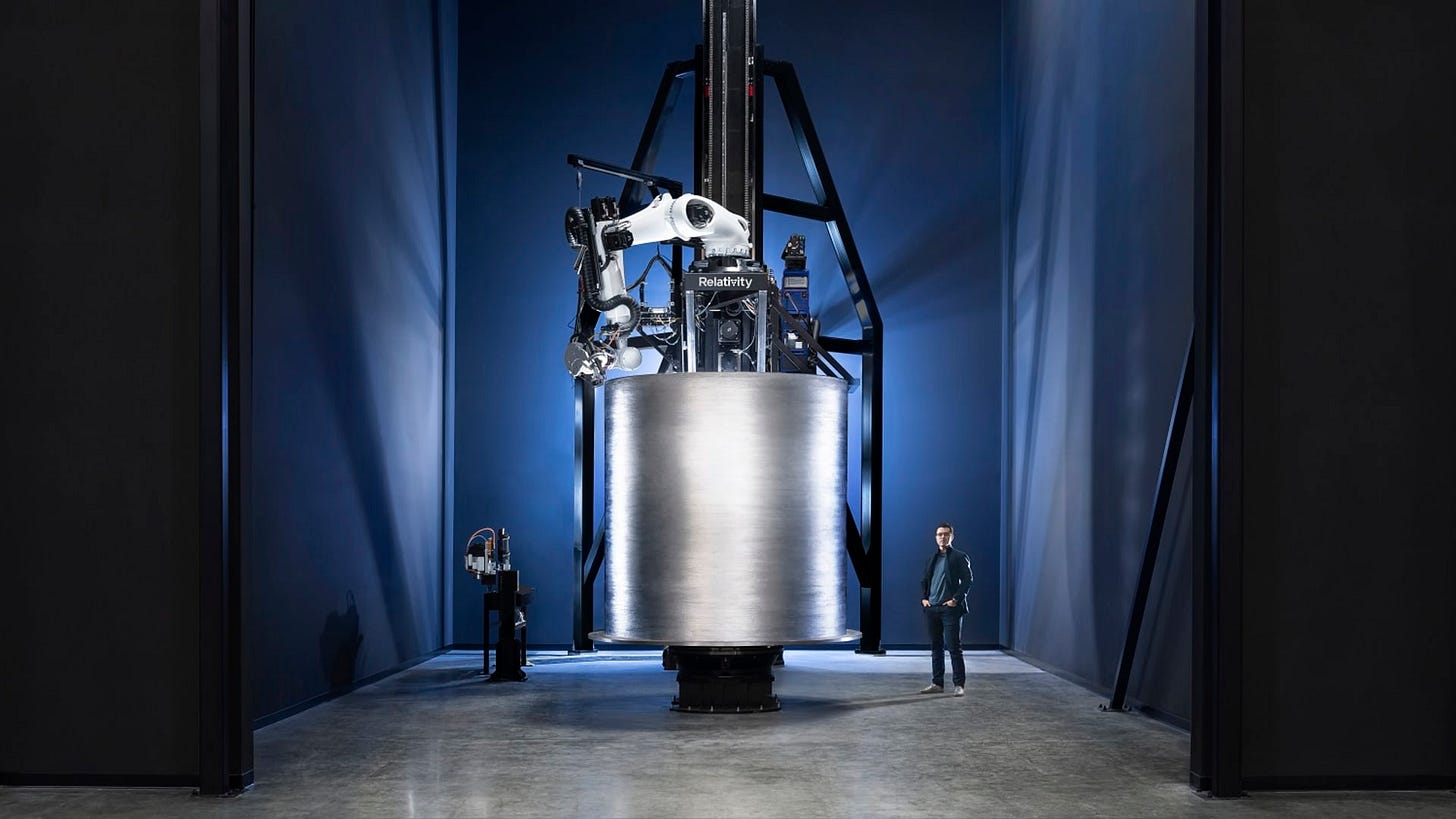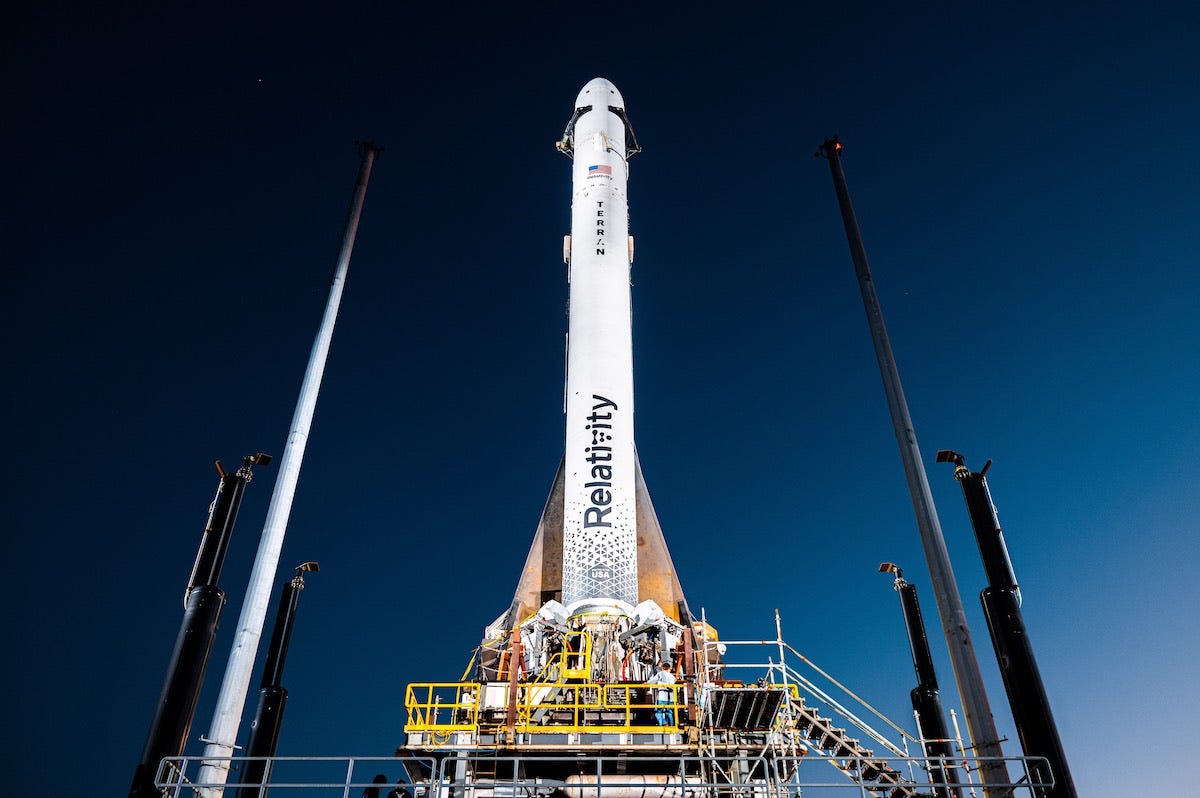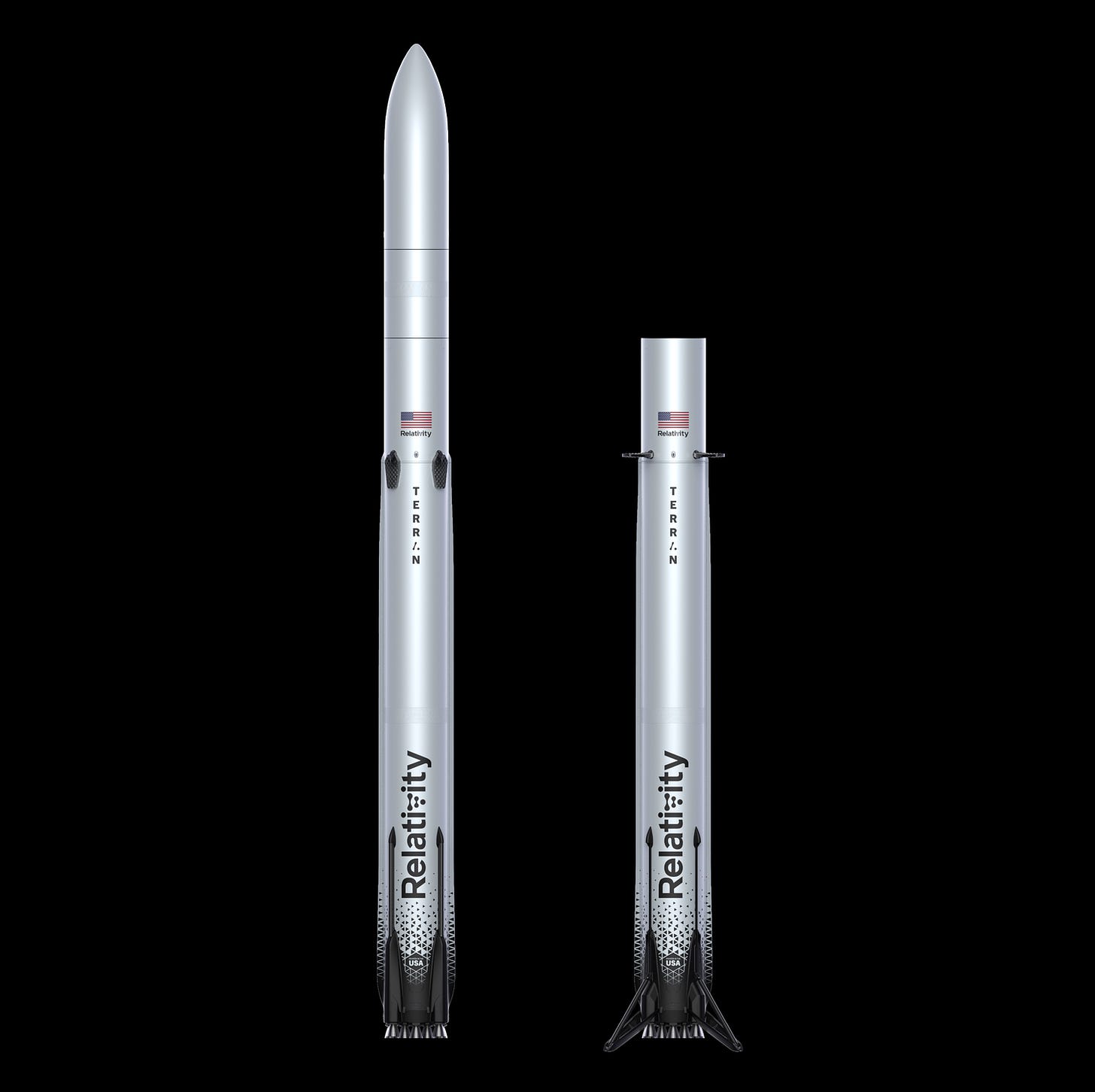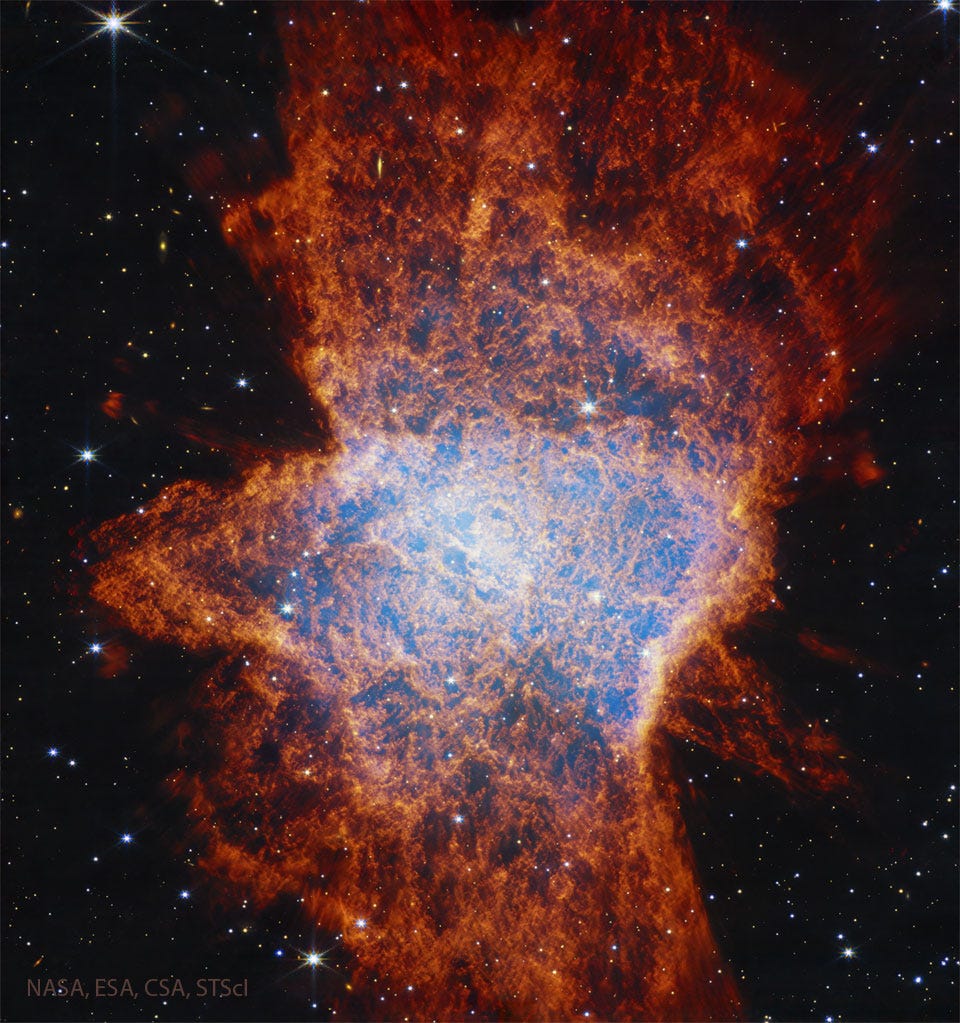Relativity Space was co-founded by Tim Ellis, who was its former CEO and currently serves as a Board Member, as well as Jordan Noone, who was its former CTO. The company was founded in 2015, and is now led by Eric Schmidt as its CEO, who joined Relativity Space as a major investor with his background experience as Google’s CEO.
The story of Relativity Space is a rich one. Ellis and Noone met at the University of Southern California in the late 2000s, studying aerospace engineering and engaging in rocketry development at the university’s Rocket Propulsion Lab. Their experiences in launching rockets led Ellis to work at Blue Origin and Noone to work at SpaceX for a few years, until they realized that the slow pace of rocketry development ought to be accelerated by leveraging 3D printing and additive manufacturing techniques. Although they campaigned for their companies to take up the helm of additive manufacturing for industrial-scale rockets, the lack of such investment in these fields by their respective companies motivated Ellis and Noone to quit their jobs and establish Relativity Space in 2015.
Relativity Space is now involved in manufacturing commercial orbital launch vehicles and rocket engines using proprietary, large-scale metal 3D printing in tandem with autonomous robotic manufacturing systems. Its key product line—involving the Terran 1 rocket with the Aeon 1 engine (now both discontinued) and the Terran R rocket with the Aeon R engine, as well as their Stargate additive manufacturing machine—enables satellite deployment, responsive space access, and, in the long term, infrastructure for multiplanetary industry.
The special characteristic that has only further motivated their breakneck pace of development is the ingenuity of the founders and their resilience. One of the first emails Ellis had sent from the company account, as he recalls, was to the famed investor Mark Cuban—their snappy pitches and quick thinking eventually earned them $500,000 in seed startup money from Cuban, as well as another $500,000 from the well-known Y Combinator fund. Ellis and Noone spent their time in the early days of the company not only focusing on the technical mission at hand, but also the growth of the company, hosting dozens of in-person meetings and phone calls to tap into investor networks and push the company’s growth forward, until they raised $10 million in series A funding to start, and now have accumulated over $1 billion in funding as of 2025. Their progress speaks to their prowess in the industry, but their recognition—for example, as part of the Forbes 30 under 30 class of 2019 or as an invitee to the White House National Space Council (for Ellis)—only further underscores their influence and credibility.
The expertise in both the technical and growth side of the business attracted considerable talent, including Tim Buzza, David Giger, Josh Brost, and others. Buzza was a founding member of SpaceX and grew to become the VP of Launch at SpaceX before switching over to Relativity, now serving as a distinguished engineer. Giger was the Senior Director of Dragon Engineering at SpaceX before serving as the VP of Engineering at Relativity. Brost was the Senior Director of Global Business Development at SpaceX and is now the Chief Revenue Officer at Relativity Space. With strong leadership at the helm, Relativity Space has been able to attract over 1,000 talented engineers, business analysts, software engineers, policy professionals, and others.
In recent years, Eric Schmidt has been brought on as CEO, succeeding Ellis, who remains as a board member, and Noone has departed from the firm to embark on new ventures, having transitioned out of his role as CTO into a technical advisor for several months.
So what are Relativity’s products in particular?
Terran 1 | Source: <Spaceflight Now>
Terran 1 was the company’s first iteration of their rocket, consisting of an expendable launch vehicle with two stages to provide around 1250 kg in payload capacity to a low Earth orbit (LEO) of around 185 km in altitude or to provide 900 kg to a sun synchronous orbit of around 500 km in altitude. Measuring in at 110 feet tall and 7.5 feet wide, Terran 1 was the largest 3D printed object to ever be created, let alone be launched in an attempt to achieve orbital insertion, as the company puts it.
The first stage of the Terran 1 is powered by nine 3D-printed Aeon-1 engines, fueled by liquid oxygen (LOX) and methane, and the second stage of the Terran 1 is powered by a single 3D-printed Aeon-1-Vacuum engine. The first-ever rocket flight Relativity Space commissioned took place as part of the ‘Good Luck, Have Fun’ (GLHF) campaign with a Terran 1 rocket in March 2023, but the Terran 1’s flight failed to reach orbit due to an engine issue associated with the second stage.
Although the rocket did certainly achieve key milestones with 3D manufacturing—including being manufactured with 85% 3D-printed material—the team has since moved on to further develop their partially-reusable offering of the Terran R and no longer develops or commissions the Terran 1.
Terran R | Source: <Space Voyaging>
The Terran R is the partially reusable launch vehicle version that builds off of the first principles identified by Terran 1, and is built with a mix of additive manufacturing and commercial-off-the-shelf technologies, to provide a maximum of 33,500 kg of payload to Low Earth Orbit (LEO) and 5,500 kg to a Geosynchronous Transfer Orbit (GTO). Measuring in at around 284 feet tall and 17.7 feet wide, the Terran R is considerably larger than that of its predecessor, the Terran 1, supporting the needs of commercial and government entities in sending payloads into LEO, MEO, and GEO.
The Terran R rocket is currently in development, with a reusable first stage powered by 13 3D-printed Aeon-R rocket engines fueled by liquid oxygen (LOX) and methane and an expendable second stage, powered by a single 3D-printed Aeon-R-Vacuum engine. The Terran R is expected to have its maiden flight in 2026.
Engines
To support the Terran 1 and the Terran R, Relativity Space designed custom Aeon 1, Aeon R, and Aeon Vac as 3D-printed engines, leveraging gases like liquid oxygen (LOX) and methane commonly used in other rockets to provide thrust and propulsion to Relativity’s rocket offerings.
Stargate
In addition to the core offerings that civil and defense consumers may leverage for space operations, Relativity Space has built a custom additive manufacturing machine called Stargate, serving as some of the world’s largest metal 3D printers featuring AI and robotic controls to support end-to-end vertical integration. The Stargate printing platform is considered to be proprietary, in-house technology that enables the company to engage in rapid, flexible, and massively simplified rocket manufacturing, requiring an estimated 100x reduction in necessary parts so that the company can build a rocket in under 60 days.
Takeaways 🚀
Through these offerings, Relativity hopes to offer the following propositions, distinguishing itself from its competitors like SpaceX or Firefly:
Speed & Flexibility: From design to flight in under two months due to additive and software-driven approaches, enabling quick turnarounds for commercial and government clients.
Cost Disruption: Far simpler supply chains (100x fewer parts) lower manufacturing and operational costs, targeting a high-value, price-sensitive market.
Reusability at Scale: Terran R’s architecture makes high-frequency re-flights possible, crucial for satellite mega-constellations and lowering space entry barriers.
Customization: Customers get adaptable, right-sized launches on-demand—reducing the need to “rideshare” on larger legacy platforms.
Sustainability/Mars Readiness: Technologies (fuel, manufacturing) selected for future extraplanetary use, enabling self-sustaining industrial capability for Mars missions.
At the end of it all, the core job-to-be-done through products like Terran R with the Aeon R engines, as built by the Stargate printing platform, is to bring large payloads to orbit faster. The demand for space-based intelligence, internet, and other services is increasingly fundamental to global operations, for which Relativity’s launch solutions are poised to solve the “access bottleneck” for satellite operators across the civil and defense spectra. For some customers, especially heritage players like Telesat and Oneweb, space access is core to their mission and business model, for which Relativity can provide a scalable, disruptive alternative to legacy rockets.
NASA Photo of the Day 🌔
Explanation: Why is this nebula so complex? The Webb Space Telescope has imaged a nebula in great detail that is thought to have emerged from a Sun-like star. NGC 6072 has been resolved into one of the more unusual and complex examples of planetary nebula. The featured image is in infrared light with the red color highlighting cool hydrogen gas. Study of previous images of NGC 6072 indicated several likely outflows and two disks inside the jumbled gas, while the new Webb image resolves new features likely including one disk's edge protruding on the central left. A leading origin hypothesis holds that the nebula's complexity is caused or enhanced by multiple outbursts from a star in a multi-star system near the center.
Daily Opportunity Drop 🌌
Check out this opportunity to work at the Dorm Room Fund, specializing in VC: https://www.dormroomfund.com/








